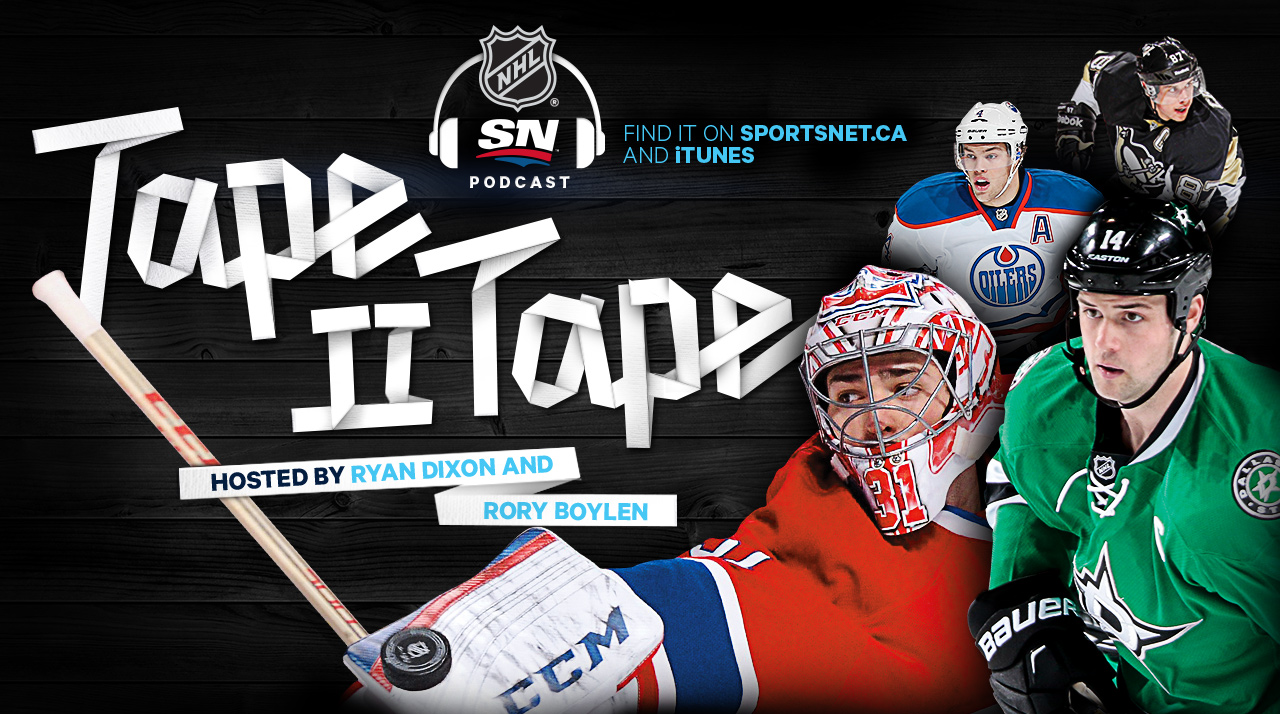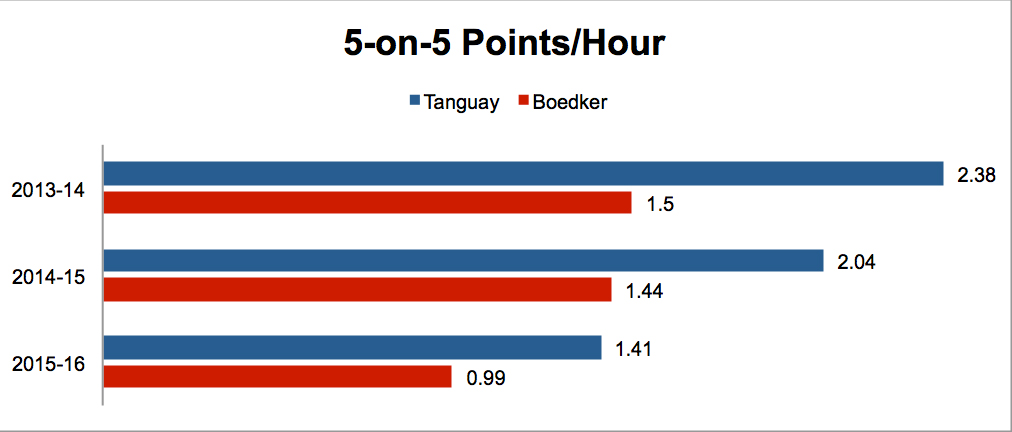Superficially, the Mikkel Boedker trade between the Colorado Avalanche and Arizona Coyotes looks like the kind of move that teams loading up for playoff runs make all the time. On the surface, you’d think the Avalanche are getting the superior player in exchange for two prospects and a veteran contract dump.
Don’t believe it. The deal that sent Boedker to Denver at the price of veteran Alex Tanguay and prospects Conner Bleackley and Kyle Wood is a deal in which the value is lopsidedly in Arizona’s favour.
The key assumption here—the one made by the Avs and which most analysts will doubtless agree with—is that the 26-year-old Boedker is a better player today than the 36-year-old Tanguay. The trouble is that when we start digging beyond raw point totals it becomes very difficult to make that assertion with any confidence.
Let’s start with five-on-five scoring. With the Coyotes, Boedker played a lot for a team with very few offensive options, while Tanguay played a lesser role for an Avalanche club that has a number of talented forwards. To keep this comparison fair, we’ll factor out ice time.
The best way to do that is to look at points-per-hour. The following chart shows the results for both players over the past three seasons:
Tanguay, in dark blue, is obviously declining. He only played 16 games in 2013-14, so it’s worth looking at those numbers with some skepticism, but last year he was very strong and this season he’s had a dramatic reduction in effectiveness. It’s understandable why Colorado would want to upgrade him.
The problem is that Boedker doesn’t seem to be an upgrade. Even declining 2015-16 Tanguay is scoring at basically the same level that Boedker did the past two years, and Boedker’s numbers have fallen even further this year, down to just 0.99 points per hour when he’s on the ice. That’s the same scoring clip managed by Cody McLeod, who is currently the No. 12 Colorado forward in offensive production.
Perhaps Boedker compensates by being a two-way player. His plus/minus (minus-28) is 10 worse than any other Coyotes player and would seem to run against that theory, but as readers know plus/minus is prone to all kinds of outside factors and shouldn’t be trusted. A more reliable indicator is on-ice shot differential.
I prefer to use a stat called Fenwick, which tracks the number of shots and missed shots that happen when a player is on the ice. That way, teams that are good at blocking shots aren’t penalized. I also like to compare a player’s on-ice rates with his team’s, because a player with a bad number might be underrated if his team is even worse.
How have Tanguay and Boedker fared over the past three years?
Tanguay, in blue, outperforms his team in two of three years, including this one. Boedker, in red, consistently trails the average in Arizona. This is even worse than it sounds, because Arizona has mostly been a pretty awful team the past three years. The fact Boedker is this bad with Arizona strongly suggests that when he’s on the ice for any other team, they’re going to get out-shot by an ugly margin.
That’s important, because it informs our other numbers. Boedker, as we’ve seen, isn’t such a naturally talented scorer that he makes up for his defensive shortcomings. There’s also absolutely no reason to believe he’s good at suppressing shot quality in the defensive zone. Remember, his plus/minus is 10 goals worse than any other Coyote.
But if Boedker’s so bad at everything, how is it that he has 39 points and Tanguay has just 22?
The answer lies on the power play. Boedker has been a top scorer on the man advantage for years now; he has real and demonstrated talent in these situations. That in large part is the reason why Coyotes coach Dave Tippett played Boedker an average of 4:17 per game on the power play. That’s more than a minute higher than any other Coyotes forward and it is 1:17 more than the Avs’ top power play forward (Nathan MacKinnon) gets.
This is the player Colorado acquired. While there will be focus on physical attributes—Boedker brings size and speed—in terms of results he is a pure power play specialist. He’s a firmly mediocre even-strength scorer and he’s a worse two-way player, bad enough that he represents a significant downgrade from Tanguay in both areas.
Even as a one-for-one move, it’s an interesting redistribution of talent for a playoff run, where penalty calls drop off sharply as the games rise in importance and five-on-five play becomes paramount.
But this wasn’t a one-for-one trade. The Avs also shipped out the first two picks they made at the 2014 Draft for the privilege of getting this deal done. And as others have explored about those kinds of assets, they represent an increased chance of adding an NHL talent in the future.
Combine those prospects with the differences already noted between Boedker and Tanguay and there’s absolutely no question this trade was a terrible gamble for the Avalanche. It’s debatable whether they should even be selling futures to load up for an unlikely playoff run, but to sell futures while lessening the playoff ability of the club is indefensible.
Arizona got good value here. Colorado got taken for a ride.

Tape II Tape offers hard-charging, wise-cracking infotainment that goes deep on pucks and always plays a 200-foot game. Catch a special trade deadline edition Tuesday










